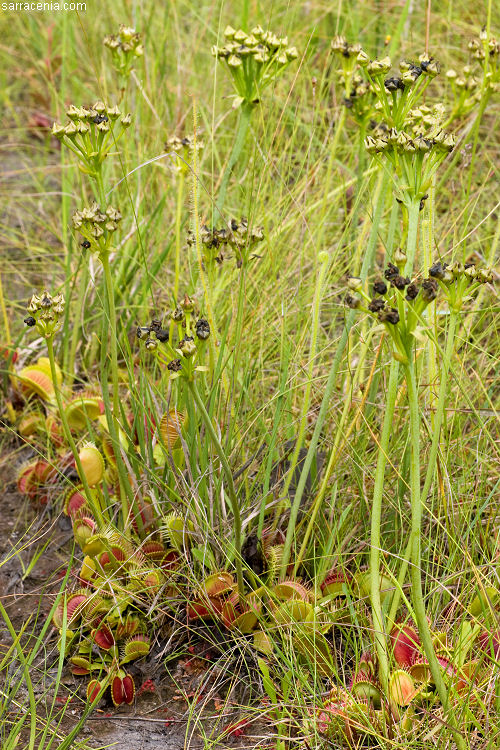
Lookie who!
And still I waited for the clouds-that-would-not-come.
As I groused, Jim and Beth amused themselves by ranging around to see what they could find. Beth is
a big fan of Pinguicula, and delighted in finding many
P. ionantha rosettes in the wetter areas.
Meanwhile, Jim found a big swath of Dionaea muscipula growing along a drainage.
This was a Dionaea site that I had not known about--although I knew of another
colony 3.5 km down the road.
The plants were growing well, and were producing many
infructescences. Clearly, these plants would be
generating a lot of seed!
In the past there has been some discussion of the nativity of these plants. However, it is no longer
a matter subject to uncertainty. The people responsible for introducing Dionaea seeds
to Apalachicola have been identified, and there is no need to speculate about migratory birds, etc.
Are these plants an ecological menace? Clearly not--they have few of the characteristics of a
harmful invasive species. However, do not try to convince yourself that they are contributing
to the survival of Dionaea as a species---these colonies are artificial plantings, and are
no more "natural" than a plant in a pot on a windowsill.
Meanwhile, I think that putting them here is ugly. Apalachicola is a beautiful, wondrous place. It does not need
artificial adornments, much as it would not need people to hang plastic ornaments from the trees.
Dionaea muscipula doesn't belong in Apalachicola---it is not what makes this part of the world
unique and special.